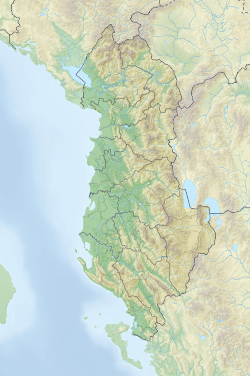This article needs additional citations for verification .(July 2020) |
| Hajji Bendo Mosque | |
|---|---|
Xhamia e Haxhi Bendos | |
 Ruins of the former mosque | |
| Religion | |
| Affiliation | Sunni Islam (former) |
| Ecclesiastical or organisational status | Mosque (16th century–c. 1967) |
| Status | Destroyed (ruinous state) |
| Location | |
| Location | Borsh Castle, Himarë, Vlorë County |
| Country | Albania |
Location of the former mosque in Albania | |
 Interactive map of Hajji Bendo Mosque | |
| Coordinates | 40°04′11″N19°51′24″E / 40.06972°N 19.85667°E |
| Architecture | |
| Type | Islamic architecture |
| Destroyed | c. 1967 |
| Specifications | |
| Dome | 1 (since destroyed) |
| Minaret | 1 (since destroyed) |
| Official name | Hajji Bendo Mosque |
The Hajji Bendo Mosque (Albanian : Xhamia e Haxhi Bendos) or Haji Bedo Mosque (Xhamia e Sopotit) is an Ottoman-era former Sunni mosque, that was built before the 17th century inside the Borsh Castle on the Sopot hill of Himara, Albania. The former mosque was badly damaged in the 20th century by the Greeks, further damaged during the Communist dictatorship of Enver Hoxha in 1967, and remains in a ruined state. The former mosque was designated as a Cultural Monument of Albania.[ when? ]

